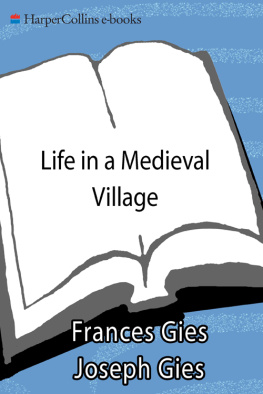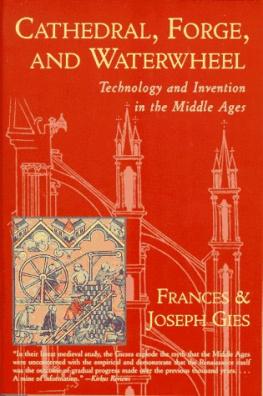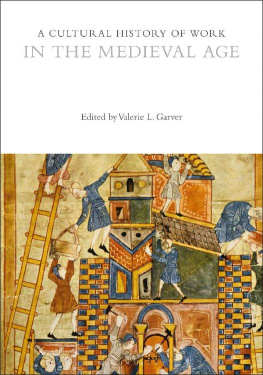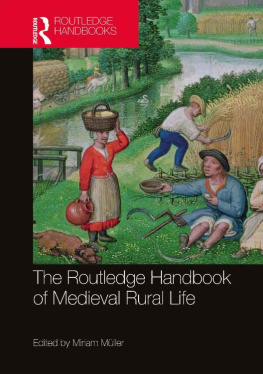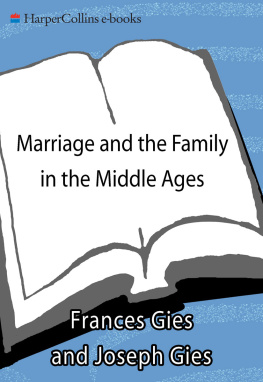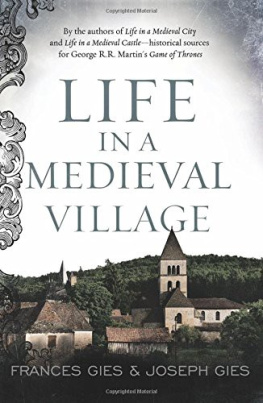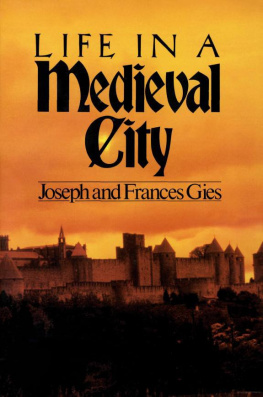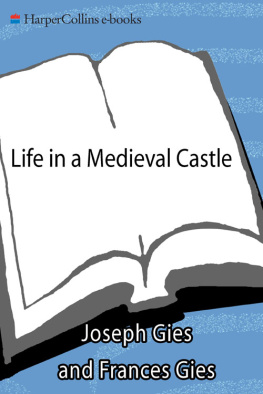To Dorothy, Nathan, and Rosie
I N THE DISTRICT OF HUNTINGDON THERE IS A CERtain village to which far-distant antiquity gave the name of Aethelintone, wrote the twelfth-century monk who chronicled the history of Ramsey Abbey, on a most beautiful site, provided with a course of waters, in a pleasant plain of meadows with abundant grazing for cattle, and rich in fertile fields.
The village that the Anglo-Saxons called Aethelintone (or Aethelington, or Adelintune), known in the thirteenth century, with further spelling variations, as Aylington, and today as Elton, was one of the thousands of peasant communities scattered over the face of Europe and the British Isles in the high Middle Ages, sheltering more than 90 percent of the total population, the ancestors of most Europeans and North Americans alive today.
Many of these peasant settlements were mere hamlets or scattered homesteads, but in certain large areas of England and Continental Europe people lived in true villages, where they practiced a distinctive system of agriculture. Because England has preserved the earliest and most complete documentation of the medieval village, in the form of surveys, accounts, and the

The River Nene at Elton.
rolls of manorial courts, this book will focus on an English village.
Medieval villages varied in population, area, configuration, and social and economic details. But Elton, a dependency of wealthy Ramsey Abbey, located in the East Midlands, in the region of England where villages abounded and the open field agriculture associated with them flourished, illustrates many of the characteristics common to villages at the high point of their development.
Elton stands today, a village of about six hundred people, in northwest Cambridgeshire.on the banks of the River Nene. Smaller streets and lanes intersect these two thoroughfares. The two sections have long been known as Overend and Nether End. Nether End contains the green, with a Methodist chapel adjoining. Near the river here the construction of a floodbank in 1977 uncovered the foundations of the medieval manor house. Overend centers around the church, with its school and rectory nearby. At the southern limit of Overend stands the villages tourist attraction, Elton Hall, a stately home whose gatehouse and chapel alone date as far back as the fifteenth century, the rest from much later.
Two pubs, a post office/general store, and a garage comprise Eltons business center. Buses and cars speed along the Peterborough-Oundle road. Some of the cottages, nestling in their neat gardens, are picturesquely thatched. Off beyond the streets, sheep graze in the meadows. Yet Elton, like many other English villages, is no longer a farming community. Most of its inhabitants work in nearby Peterborough, or commute to London. The family that owns Elton Hall operates an agricultural enterprise, and one independent farmer lives in the village; two have farms outside, in the parish. A few descendants of farm laborers live in subsidized housing on a Council estate.
Except perhaps for the sheep, almost nothing medieval survives in twentieth-century Elton. In the northwest corner of the churchyard, inconspicuous in the shadow of the great square tower, stand the oldest identifiable objects in Elton, a pair of Anglo-Saxon crosses found during a nineteenth-century restoration of the church. The present building is mainly the product of the fourteenth and fifteenth centuries; only the stones of the chancel arch date from the thirteenth.
The oldest house surviving in Elton today was built in 1690. Medieval Elton, its houses, yards, sheds, and gardens, the smithy, the community ovens, the cultivated fields, even the meadows, marsh, and woods have vanished. Not only were medieval villages constantly rebuilt, but as forms of agriculture changed and new kinds of landholding were adopted, the very fields and meadows were transformed. We know how villages like Elton looked in the Middle Ages not so much from modern survivals as from the recent investigation of Englands extraordinary archeological trove of deserted villages, victims of dwindling population, agricultural depression, and the historic enclosure movement that turned them from busy crop-raising communities to nearly empty sheep pastures. More than two thousand such sites have been identified. Their investigation, based on a technique introduced into England during World War II by German refugee Gerhard Bersu, was pioneered in the 1950s by archeologist John Hurst and historian Maurice Beresford in the now famous Yorkshire deserted village of Wharram Percy. Excavation and aerial photography have since recovered

Two crosses in the churchyard, dating from the eleventh century or the beginning of the twelfth, are the oldest monuments in Elton.

The deserted village of Wharram Percy. Only the ruins of St. Martins church still rise above ground, but street plan and layout of houses have been recovered.
the medieval shape of many villages, the sites of their houses and enclosures, and the disposition of fields, streets, paths, and embankments.
The deserted villages, however, left few written records. These are rich, on the other hand, for many of the surviving villages. They document not merely details of the houses and holdings, but the names of the villagers themselves, their work arrangements, and their diet, recreation, quarrels, and transgressions. Much can be learned from the records of the Ramsey Abbey villages, of which Elton was one, and those of contemporary estates, lay as well as ecclesiastical. The documents are often tantalizing, sometimes frustrating, but supplemented by the archeological record, they afford an illuminating picture of the open field village, a community that originated in the central Middle Ages, achieved its highest stage in the late thirteenth century, and left its mark on the European landscape and on Western and world civilization.
1
THE VILLAGE
EMERGES
I N THE MODERN WORLD THE VILLAGE IS MERELY A very small town, often a metropolitan suburb, always very much a part of the world outside. The old-fashioned village of the American nineteenth century was more distinctive in function, supplying services of merchants and craftsmen to a circle of farm homesteads surrounding it.
The medieval village was something different from either. Only incidentally was it the dwelling place of merchants or craftsmen. Rather, its population consisted of the farmers themselves, the people who tilled the soil and herded the animals. Their houses, barns, and sheds clustered at its center, while their plowed fields and grazing pastures and meadows surrounded it. Socially, economically, and politically, it was a community.
In modern Europe and America the village is home to only a fraction of the population. In medieval Europe, as in most Third World countries today, the village sheltered the over-whelming majority of people. The modern village is a place where its inhabitants live, but not necessarily or even probably where they work. The medieval village, in contrast, was the primary community to which its people belonged for all lifes purposes. There they lived, there they labored, there they socialized, loved, married, brewed and drank ale, sinned, went to church, paid fines, had children in and out of wedlock, borrowed and lent money, tools, and grain, quarreled and fought, and got sick and died. Together they formed an integrated whole, a permanent community organized for agricultural production. Their sense of common enterprise was expressed in their records by special terms:

